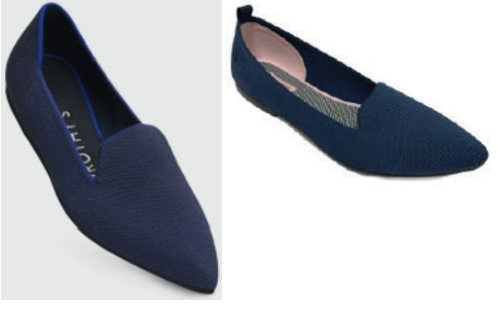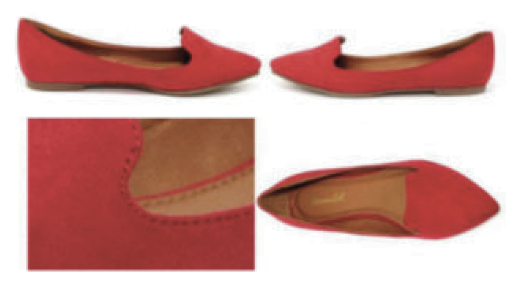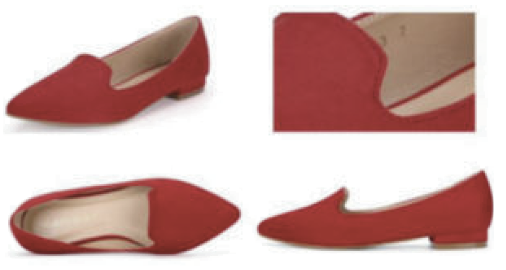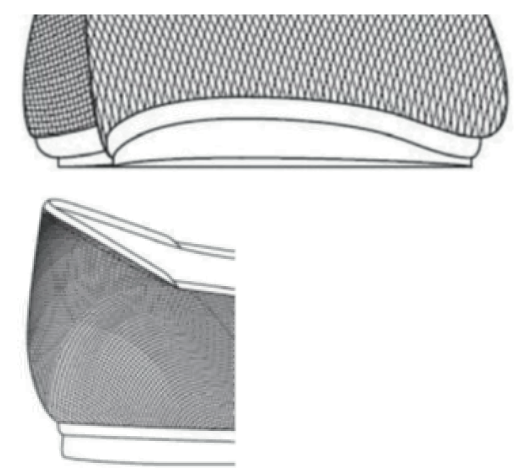IPEC finds Rothy’s registered Community design valid and infringed
In what has been dubbed the “last Community design” ruling before the UK courts, the Intellectual Property Enterprise Court (IPEC) found that Rothy’s registered Community design (RCD) for its “Pointed Loafer” ballerina shoes (depicted below left) was valid and had been infringed by Giesswein’s “Pointed Flat” shoes (depicted below right). The court however found that there had been no infringement of Rothy’s unregistered Community design (UCD) since the Pointy Flat arose from independent design rather than from copying the Pointed Loafer.

Background
Rothy’s first launched its Pointed Loafer (a type of ballerina shoe made of knitted yarn made from recycled plastic) in November 2017. The shoe had been preceded to market by two of Rothy’s other shoes known as “The Flat” and ‘The Point” (also made of knitted yarn made from recycled plastic). It was common ground between the parties that The Flat and The Point were the first ballerina shoes to be made of knitted yarn made from recycled plastic.
In April 2019, Giesswein began marketing through its website the Pointy Flat ballerina shoes (the upper parts of which were also in a knitted meshwork fabric made from recycled plastic). This resulted in:
- Rothy’s issuing design infringement proceedings against Giesswein based on its RCD and UCD in the Pointed Loafer; and
- Giesswein counterclaiming for invalidity for lack of individual character over two prior art shoe designs identified as the “Bonnibel” and the “Allegra K” (the prior designs), depicted below.


The question to the court was whether the RCD and UCD produced a different overall impression on the informed user when compared to the prior designs.
Invalidity
Both side’s experts agreed that, whilst fabrics knitted from heavy thread were known for shoe uppers for gym shoes and sneakers, the informed user would not be aware that they had been applied to ballerina shoes.
This meant that the use in the RCD and UCD of an upper knitted from heavy thread (as shown in the image of Rothy’s Pointed Loafer above and the black and white RCD images below) would stand out to the informed user as a significant difference to what had come before.
As a result, the court had no hesitation in concluding that the RCD and the UCD produced a different overall impression on the informed user than the prior designs and were therefore valid.
Infringement - interpreting the RCD
When turning to the question of infringement, so far as the RCD was concerned, an issue arose between the parties as to what the images in the RCD were showing and therefore what was being claimed as part of the protected registered design.
The first issue concerning the interpretation of the RCD related to the black lines shown on the surface of the shoe upper and, in particular, what those lines meant (see black and white images below).

Rothy’s argued that the lines “make very clear that the upper is meshwork/knitted” whilst Giesswein submitted that the cross-hatching either shows:
- that the product is a three-dimensional shape; or
- some material texture but in a more general way than depicting a knitted meshwork fabric (for example, such as knitted, woven, meshwork or animal hide textures but excluding smooth leather or plastic textures).
Although the court ultimately sided with Rothy’s, finding that it was “clear” that the lines indicated a knitted fabric (rather than any alternative textures as contended by Giesswein), this required a very close review of the images filed with the RCD (including zooming in on the high resolution images maintained by the EUIPO on its website).
In reaching its conclusion, the court observed that (amongst other things) the lines are not consistently applied across the design. For example, at the heel of the shoes, the lines radiate in a circular fashion following the counterline and this was also true when viewing the shoe from the front where the lines radiate out from the toe. These patterns were inconsistent with a woven fabric or unprinted animal hide such as nubuck or suede, which would not radiate as shown at the heel of the RCD.
The second issue concerned the meaning of the two parallel lines running around the topline of the shoe (where the foot enters the shoe). Rothy’s claimed that this indicates “a small contrasting collar which runs around the perimeter of the topline” (the contrast was not said to be one of colour) whilst Giesswein argued that these lines show “a narrow uniform binding around the whole topline” and that this is “a distinct part of the upper (not just a continuation of it to an edge)”.
Again, the court sided with Rothy’s, concluding that these lines indicate the contrasting edge created in the knitting of the shoes (such as in the neckline of a crew-neck knitted woollen sweater).
Infringement - comparing the RCD and UCD with the Pointy Flat
Having resolved the issues concerning the interpretation of the RCD, the court turned to the question of infringement, comparing the RCD and UCD against the accused item (that is, the Pointy Flat).
Whilst the court found that there were undoubtedly differences between Rothy’s RCD and UCD and Giesswein’s Pointy Flat, it concluded that the Pointy Flat did not ultimately create a different overall impression bearing in mind that:
- it was common ground that there were no relevant constraints on design freedom; and
- most importantly, what would strike the informed user the most in this case is that Rothy’s RCD and UCD and Giesswein’s Pointy Flat have uppers knitted from a heavy thread which was a departure for ballerina shoes.
The court therefore found that the Pointy Flat had infringed the RCD.
Turning to the UCD, the court went on to consider whether Giesswein had copied the UCD when designing the Pointy Flat (copying being one of the elements that must be established in order for there to be infringement of an UCD). If copying could be established then Rothy’s UCD would have been infringed.
Giesswein acknowledged that it took inspiration from The Flat, The Point and The Loafer (another shoe launched at the same time as the Pointed Loafer) throughout the process of designing the Pointy Flat but that it had never come across the Pointed Loafer (which Giesswein conceded was a limited edition product that had be shown on its website for a short period of time only).
In fact, no image or reference to the Pointed Loafer was present in any of the disclosed documents and there was no evidence that the individuals responsible for the design of the Pointy Flat had seen, been aware of, or copied the Pointed Loafer when designing the Pointy Flat.
The court therefore ruled that the Pointy Flat had not been copied from the Pointed Loafer so Rothy’s case for infringement of the UCD failed.
In short
In handing down its decision, the IPEC made important observations regarding the use of expert evidence and, in particular, the importance of avoiding having experts comment on matters that are for the court to decide, such as infringement and validity.
The case also serves as a useful reminder of the importance of (1) registering ones designs and not solely relying on unregistered rights, which require proof of copying which can be difficult to establish in practice and (2) the central role played by the images used when registering ones design. Right holders are therefore always advised to register their design and seek legal advice if they intend to file the design applications themselves.